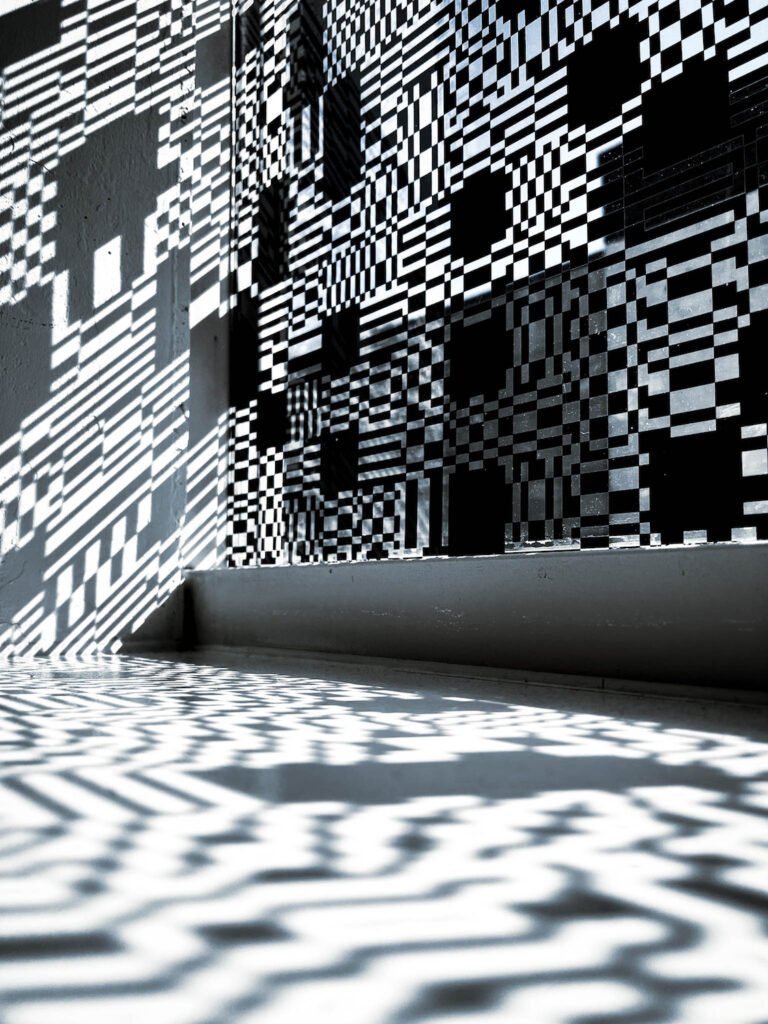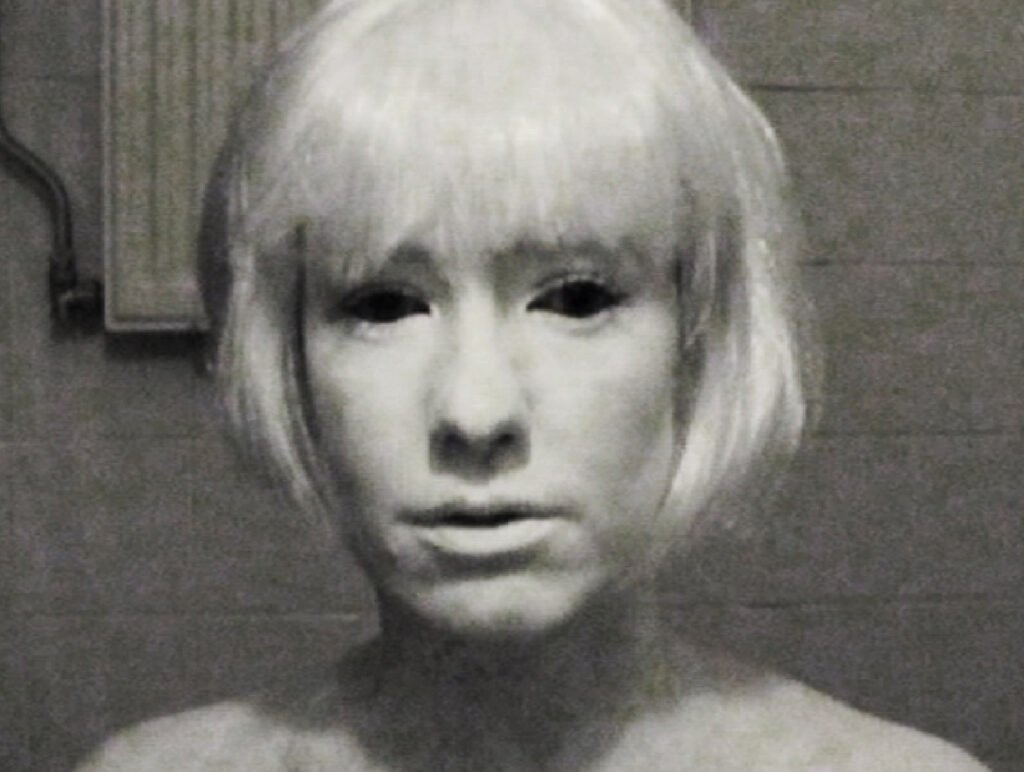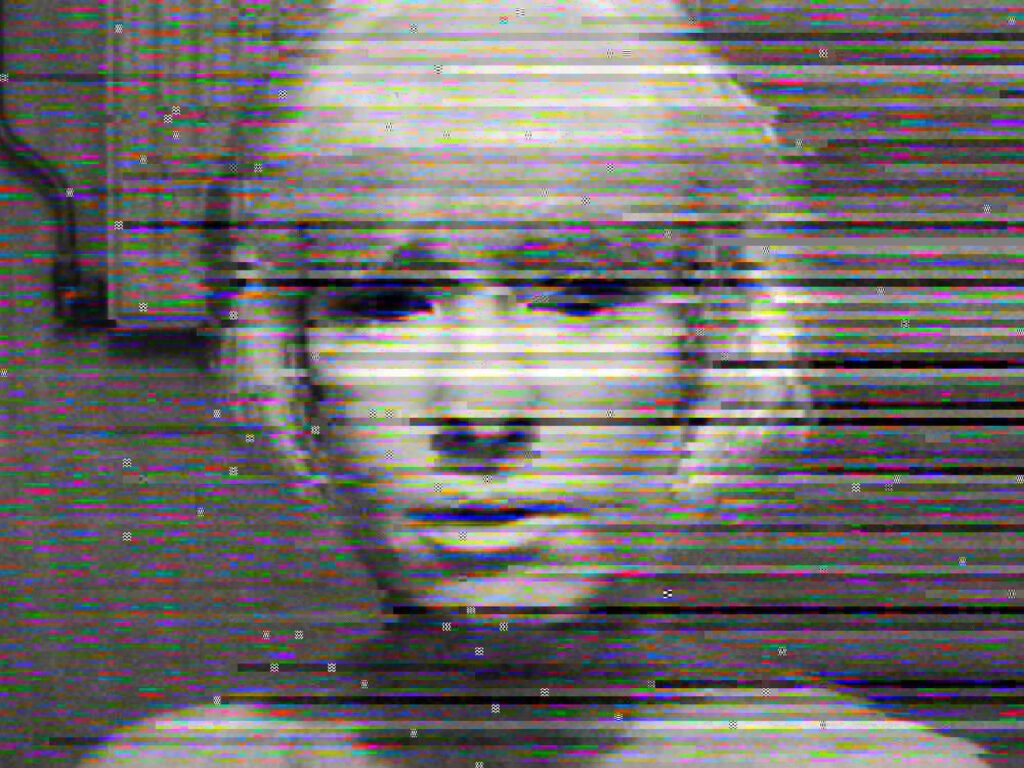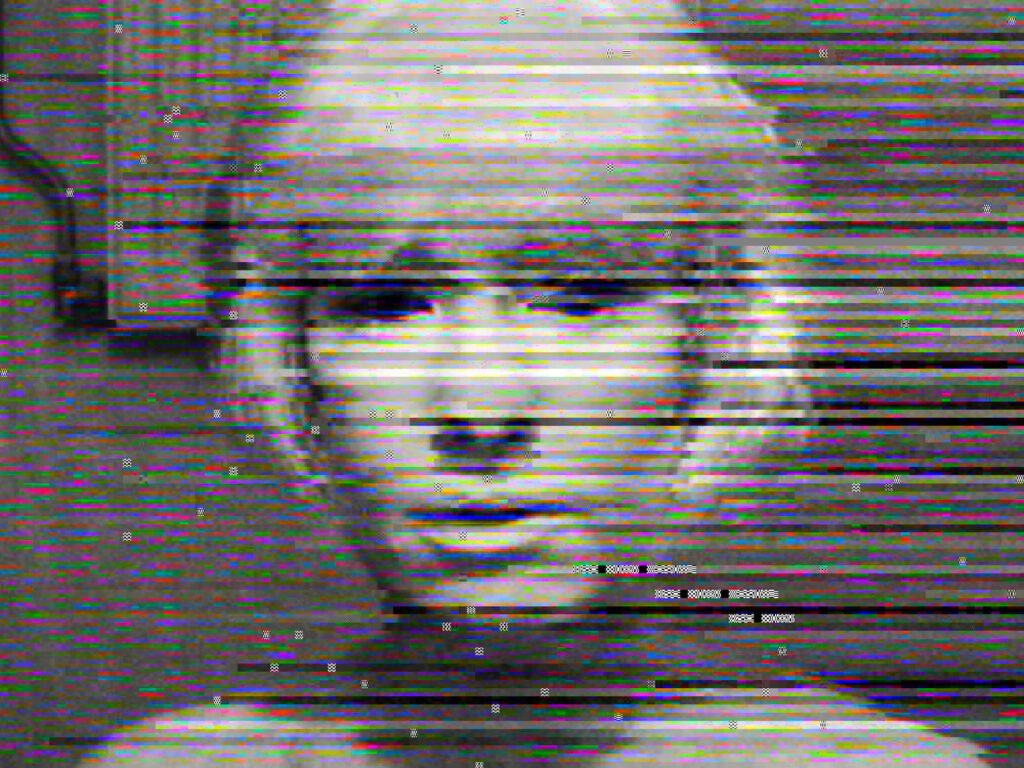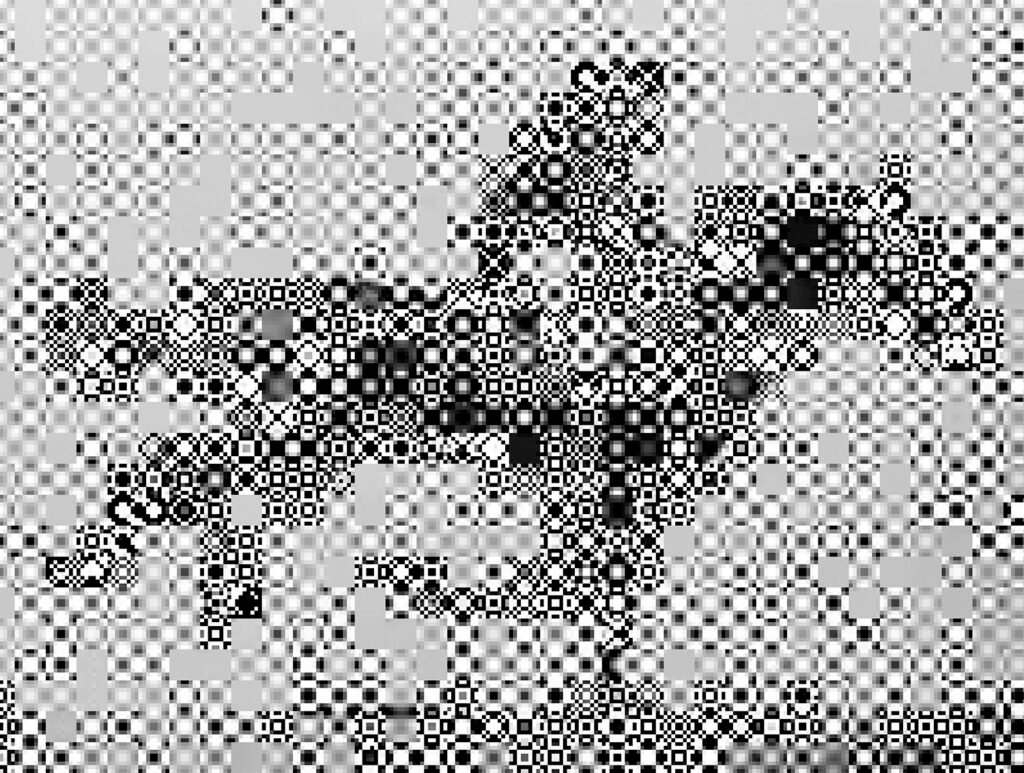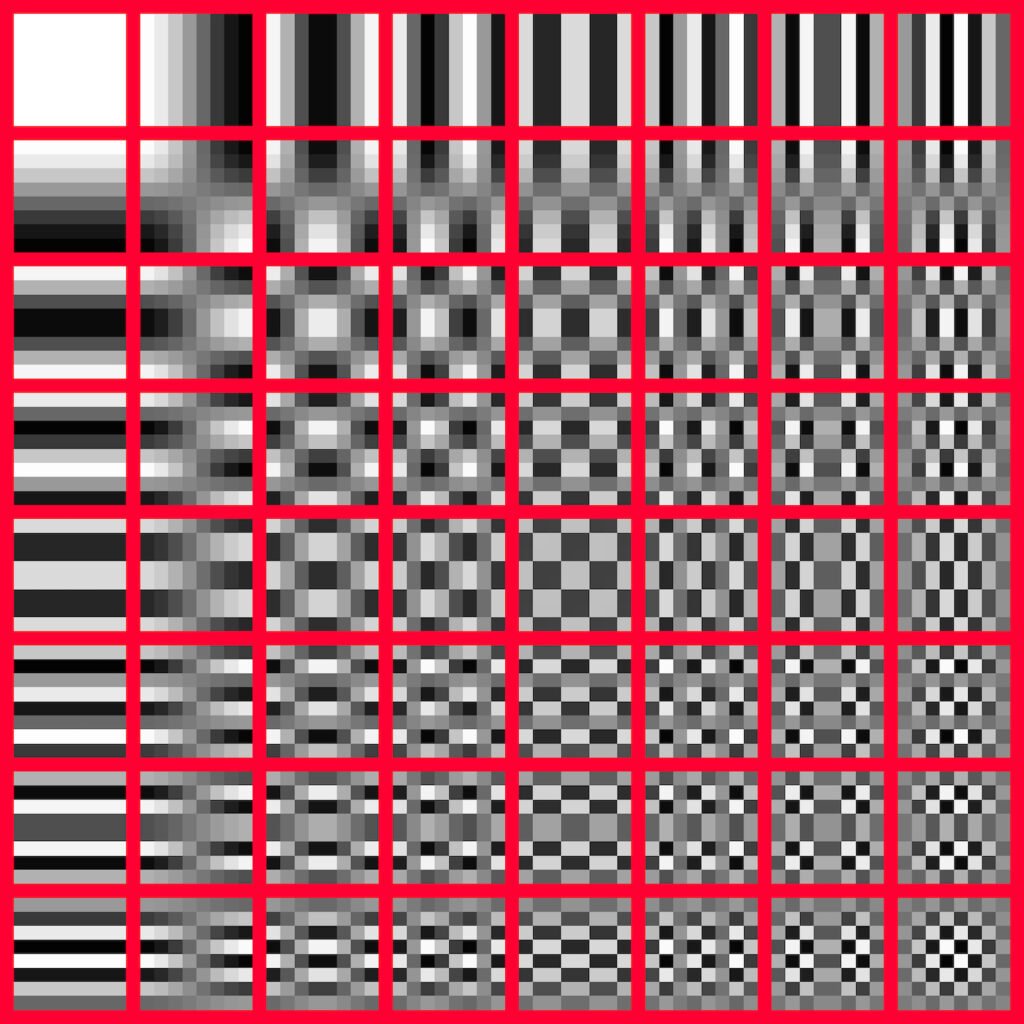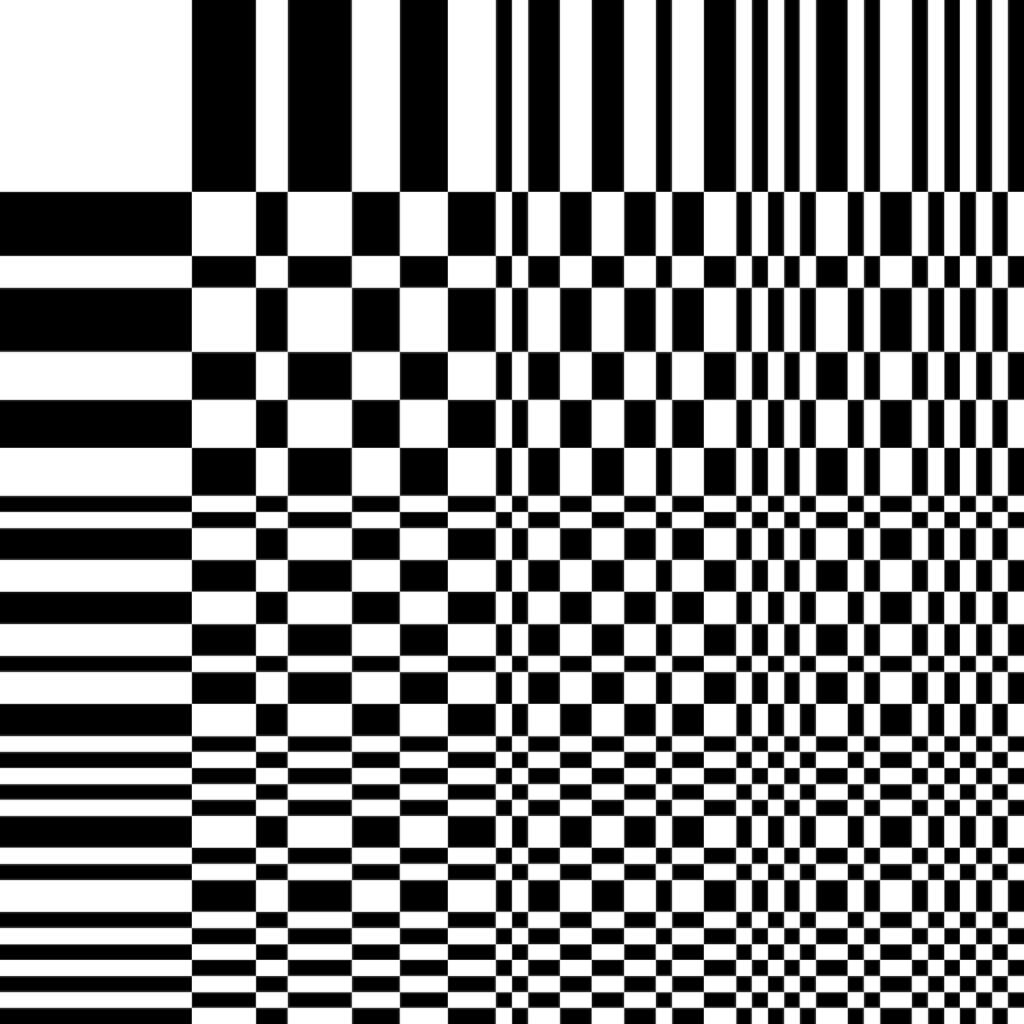Rosa Menkman and Ted Davis have created a tool that allows you to hide messages between the pixels of photographs using the errors generated by the compression of a JPEG file. These artists investigate the processes of creating images with special attention to glitches and the aesthetics of digital media.
Many digital photography file formats compress images to reduce the space they take up. The JPEG format, one of the most widely used, uses discrete cosine transform (DCT) to compact the data. If the image is compressed correctly, the reduction in the amount of data should not be visible but if it doesn’t work, artefacts in the form of 8×8 pixel black-and-white patterns called “macroblocks” are visible when you zoom in on the image.
In 2015, Rosa Menkman made DCT How not to be Read. The project consisted of a typography made from a series of macroblocks, which Menkman used to invite people to hide messages manually in images. Based on that project, in collaboration with Ted Davis, she has automated the process and created a website that allows messages to be encrypted in images using JPEG file compression.
Menkman and Davis propose using the apparent visual bug as a communication tool, making use of one of the most popular digital file formats to hide messages in plain sight.
Rosa Menkman is a Dutch artist and researcher born in 1983 and based in Berlin. Her work focuses on noise artefacts that are the result of errors in both analogue and digital media. She has published “Glitch Moment/um”, a small book on the exploitation and popularisation of glitch artefacts and “Beyond Resolution”, where she developed and highlighted the politics of resolution setting. In 2011 she co-facilitated the GLI.TC/H festivals in both Chicago and Amsterdam and in 2012 she curated Transmediale’s “Incompatible Aesthetics” symposium. She has also curated four exhibitions that illuminated different ecologies of glitch between 2012 and 2014. She was a substitute professor of New Media and Visual Communication at Kunsthochschule Kassel and won the Collide, Arts at CERN Barcelona award, recognition that inspired her recent research on im/possible images.
Born in 1983 in the United States and based in Basel, Switzerland, Ted Davis is a media artist, designer and educator. His work and teachings explore the volatility of digital media through glitch and reactivating older new media through newer programming means. His open source projects allow anyone to program. In 2021 he received the Basel Media Art Prize (Basler Medienkunstpreis) for “p5.glitch” and was a teaching fellow at the Processing Foundation. Since 2010 he teaches interaction design and coordinates the international master’s degree in Design at the Institute for Digital Communication Environments at the University of Applied Sciences and Arts Northwestern in Switzerland.
Promoted by the Begihandi collective, GETXOPHOTO is a festival dedicated to image that takes place in Getxo (Basque Country) for the last 15 years. It brings different proposals from photographers and visual storytellers from all over the world to the city, setting a contemporary conversation about the theme proposed each year.
GETXOPHOTO inhabits the public space and continues supporting the use of formats, stands and unconventional exhibition spaces to show the different images. This is a thematic festival that every three years works together with a different curator who understands the photography as a tool of knowledge, communication, and of course artistic enjoyment. Exhibitions, installations, projections, collaborations, experimental laboratories and many activities complete the program of the Festival.
Jon Uriarte is the curator of GETXOPHOTO 2022.
